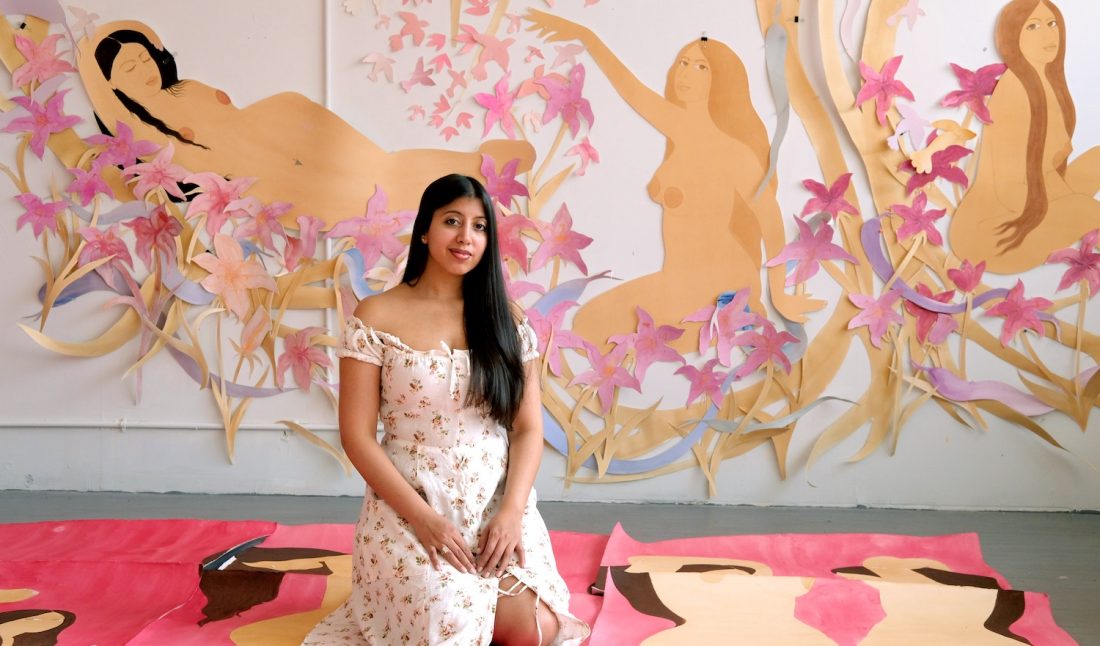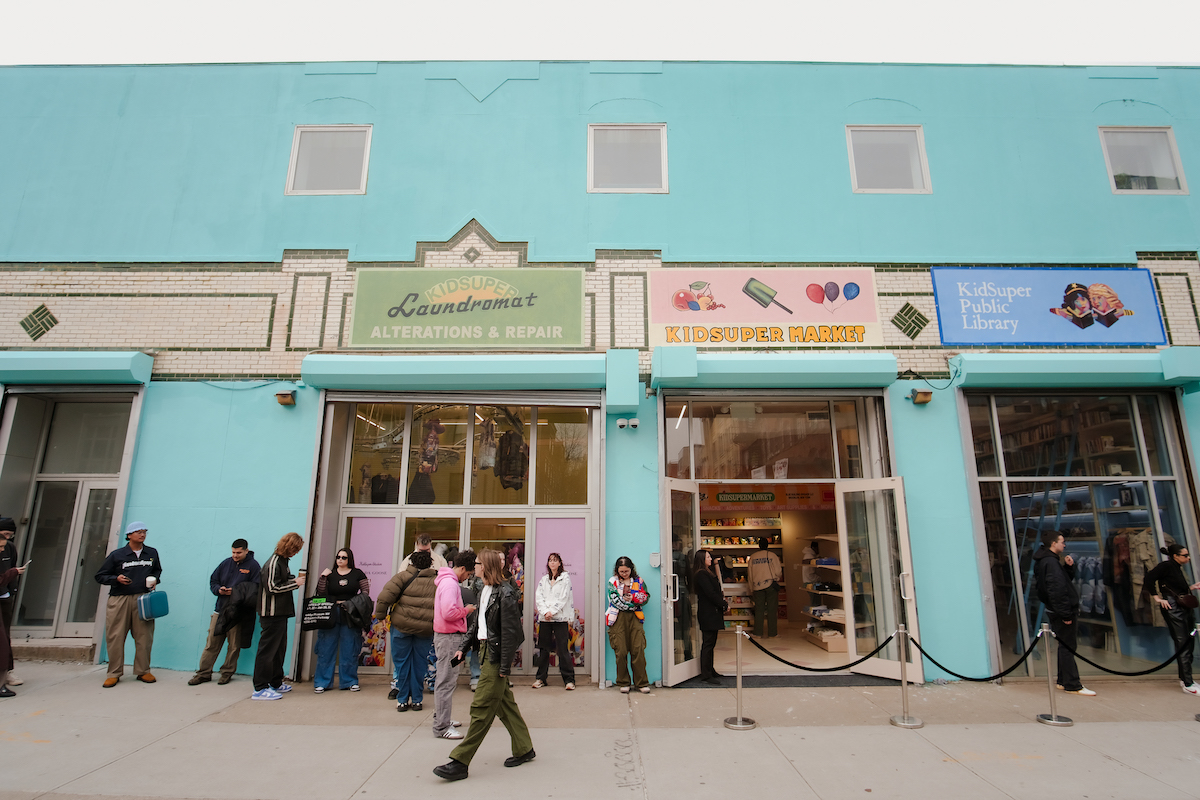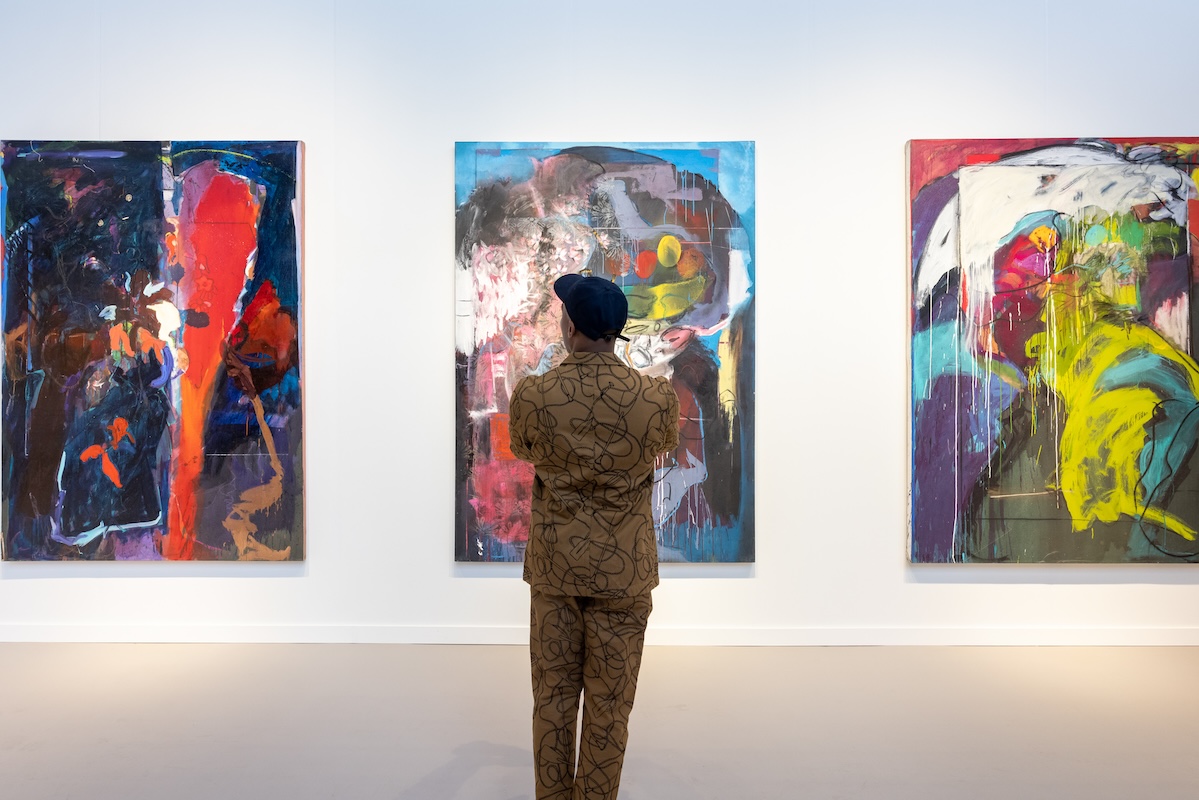The Brooklyn-based Pakistani artist Hiba Schahbaz attended art school in Lahore, Pakistan, where she discovered Indo-Persian miniature paintings made with tea. For centuries, the traditional style has been passed down directly from master to apprentice, only becoming available in an educational setting in the 1980s before the last master painter passed away. It was then that there was a resurgence of miniature painting in Pakistan, of which Schahbaz was a part.
Over the years, her works have evolved to include contemporary adjustments in material, subject, and size. A few years ago, while bedridden after suffering a personal injury, she began to create large works for the first time while lying down, unafraid to experiment. She also explored oil painting after feeling like her subject matter was too heavy for watercolors and paper. And in 2018 after the U.S. political landscape rid her of joy, she began including cutouts in the shapes of trees, butterflies, and flowers to fill that void of happiness with beauty.
While much about her painting has changed for Schahbaz since her school days, not everything has. She still meditates every morning. She drinks tea and paints with it each day. She highlights the femininity of the women around her to show gratitude, resilience, and love. Whitewall spoke with the artist—whose work will be on view this summer at Jeffrey Deitch in New York in the group show “Wonder Women” (May 7–June 25)—about creating from the heart.
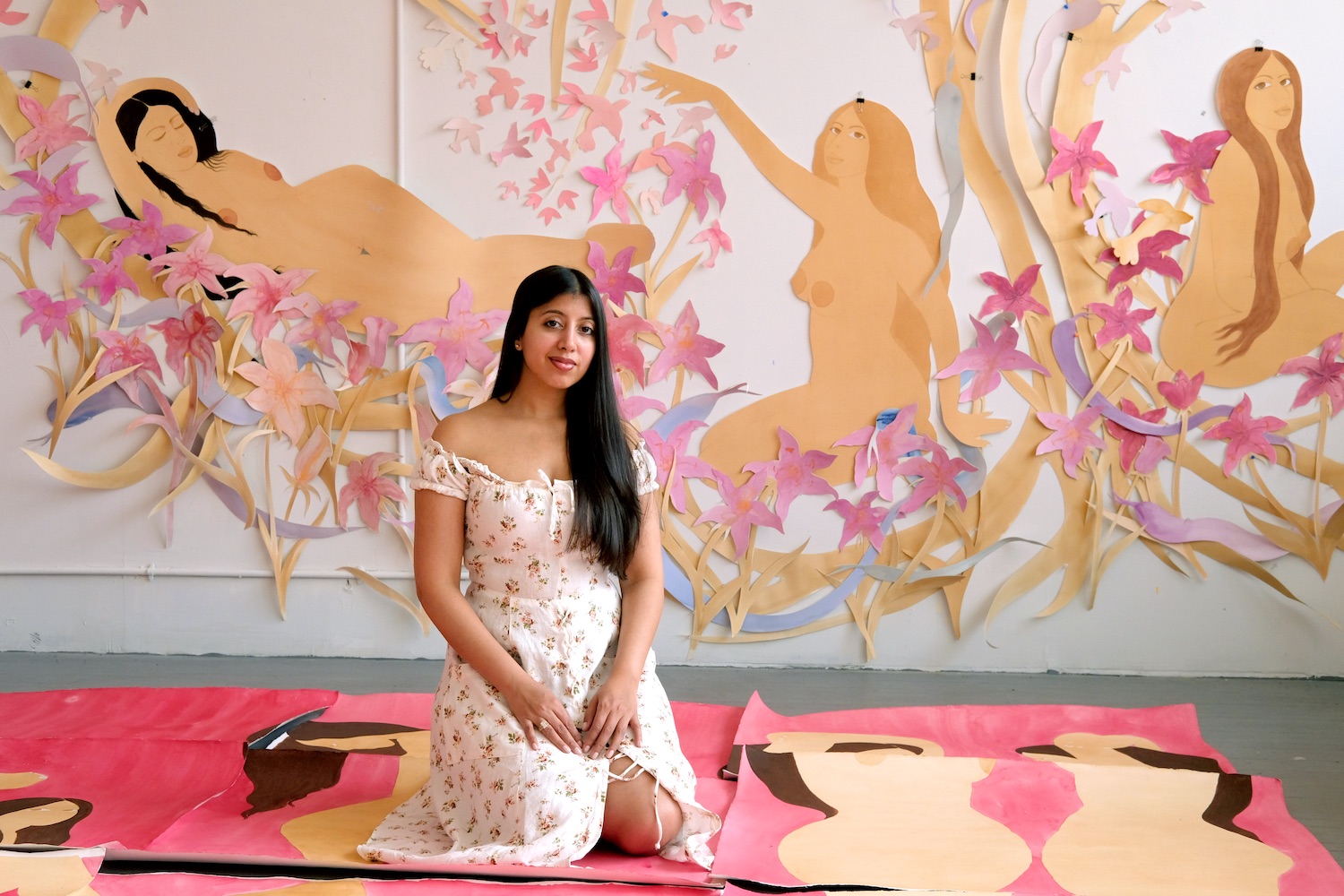 Courtesy of Hiba Schahbaz.
Courtesy of Hiba Schahbaz.
WHITEWALL: What about Indo-Persian miniature painting has kept your attention for so long?
HIBA SCHAHBAZ: There’s so much ritual to making a painting. We make our own paper, paints, and brushes. If you’re a meditative person, there is so much beauty, ritual, and history, and it pulls you in. The paintings are small, usually about seven inches, but they have whole worlds in them with so much information. It’s also very rooted in Islamic art history, so you have all of the signifiers of Islamic art, which are arabesque, geometry, and figuration. It was fascinating learning all these rules—like flattening out perspectives and not painting shadows.
As artists, we’re supposed to represent the world, but we weren’t supposed to be realistic because they didn’t want artists to compete with God. It was a journey to learn about something I knew so little about, which was such an important part of my culture but had been lost over time. It was like finding a secret.
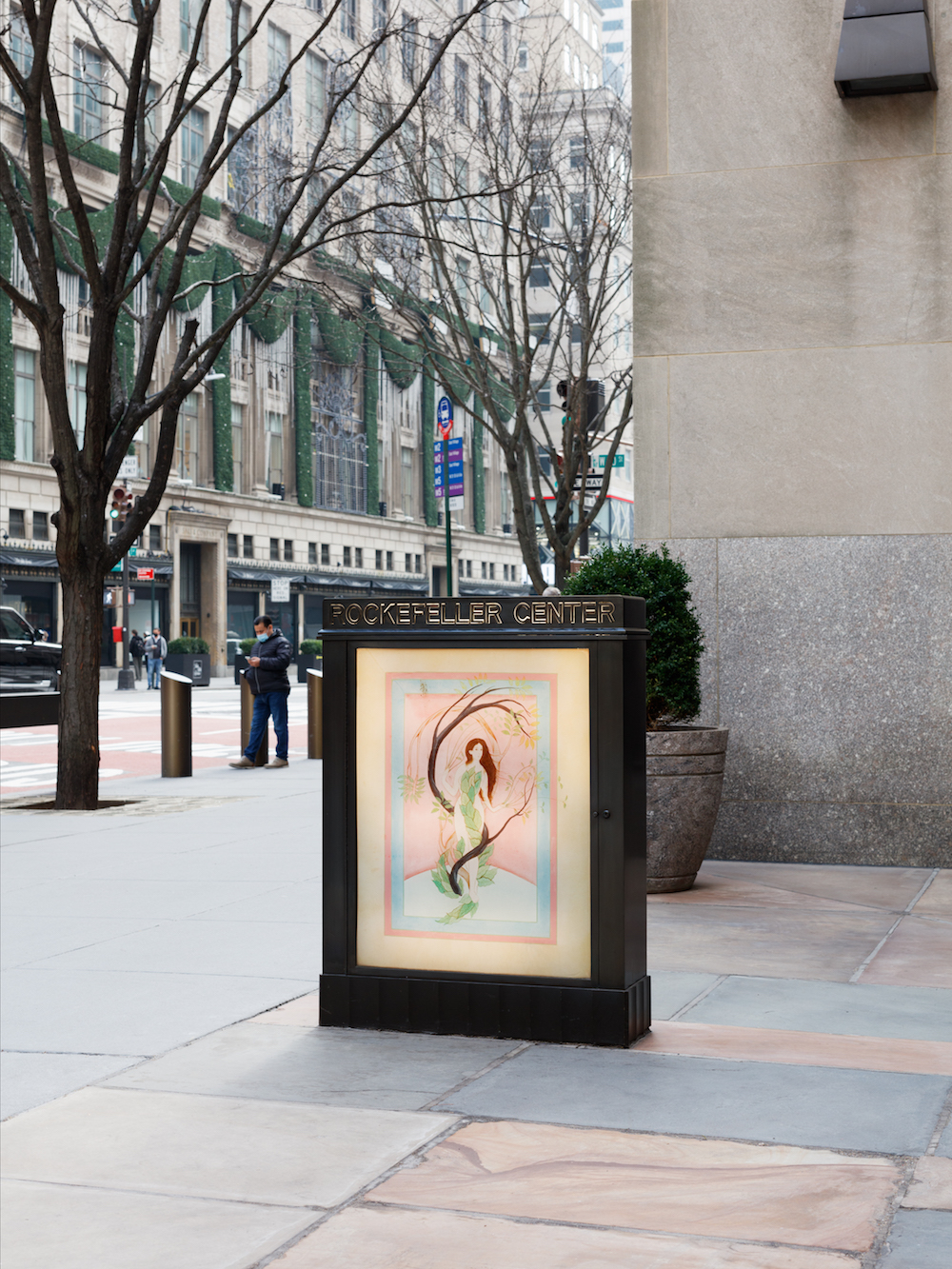 Install images of “In My Heart” by Hiba Schahbaz by Olympia Shannon, courtesy of Art Production Fund.
Install images of “In My Heart” by Hiba Schahbaz by Olympia Shannon, courtesy of Art Production Fund.
WW: Do you still make your own materials?
HS: I still make my own paints, but I usually don’t make my own paper. We have one miniature paper maker from when I was in school, and I connected him with my art store in Brooklyn. I have surfaces I’ve made, he’s made, and some that I use for larger works.
I make the gouache in these very small shells, using a pure white base, gum Arabic, and pigments of watercolor. There’s no formula, and sometimes there’s an overlap between some colors, but colors are usually made fresh for each painting.
WW: You mentioned tea being an important aspect of your life and work. What significance does it hold today?
HS: Tea is so important in Pakistani culture. We wake up and drink tea, drink tea in the afternoons, we go out and they serve us tea. At the studio back in the day, we’d sit on white sheets on the floor, and we’d have tea we were drinking and tea we were painting with. Everyone had a teacup. When I moved here and the work expanded, I naturally gravitated to making a lot of tea to paint with, as opposed to even trying to make a skin tone. I don’t even know why I did that, to be honest, but it stuck.
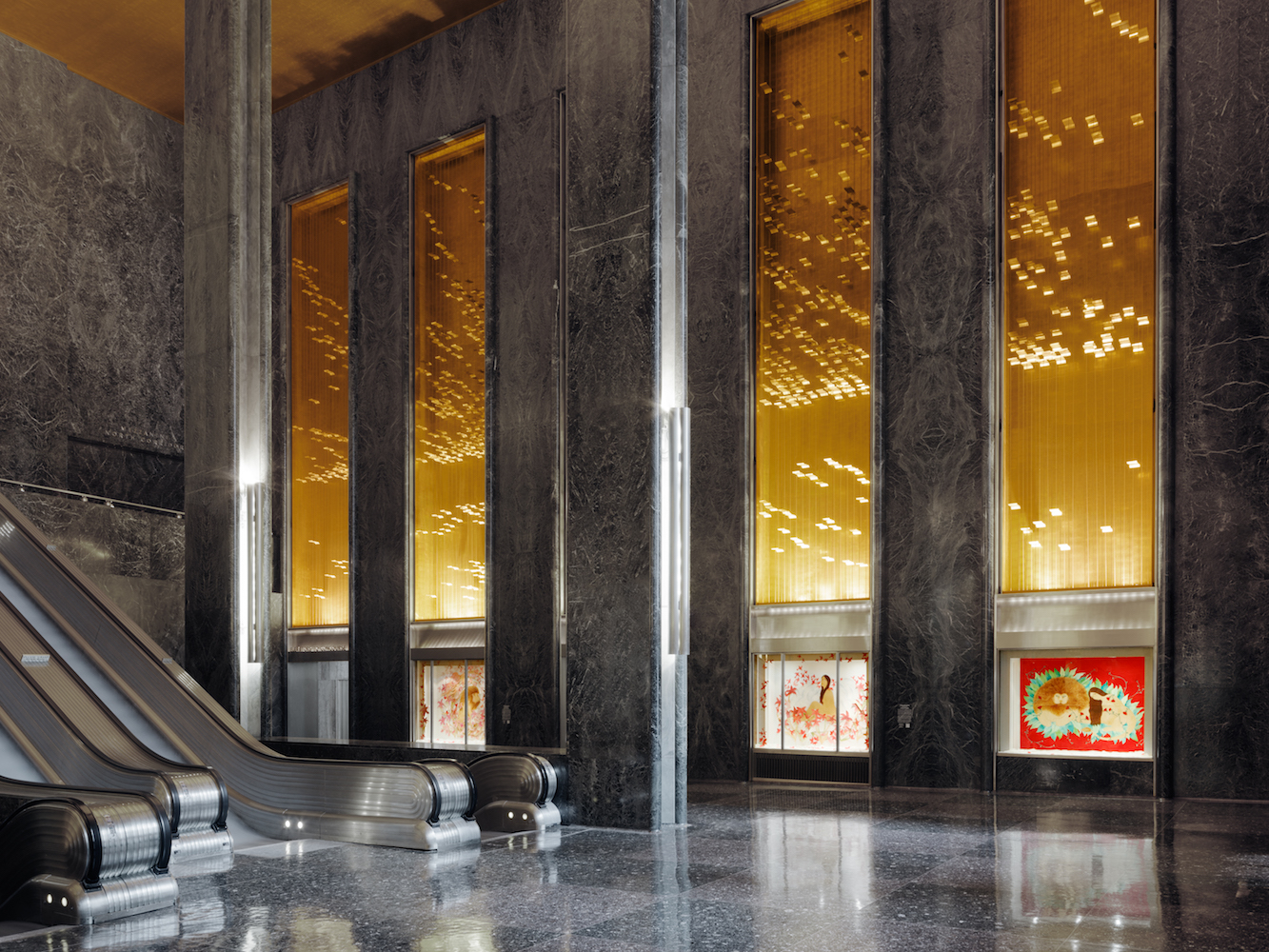 Install images of “In My Heart” by Hiba Schahbaz by Olympia Shannon, courtesy of Art Production Fund.
Install images of “In My Heart” by Hiba Schahbaz by Olympia Shannon, courtesy of Art Production Fund.
WW: How did your work evolve from miniature paintings to large-scale works?
HS: It happened so slow and so fast, as in I could see large paintings in my mind for a long time, but I couldn’t paint them because I felt responsible to carry on a tradition. It was ingrained in us to do everything in a specific way, but I could see the paintings in my mind, and one day they just became larger.
I usually don’t tell people this part of my story, but I had suffered an injury and I was in bed rest for a while. I couldn’t leave the house. I made my first huge three-figure painting there on my bed. It was three connecting panels and three women. I also couldn’t stand and paint for a long time. So I got small sheets to put together to make large paintings, which is why the works are all pieced together.
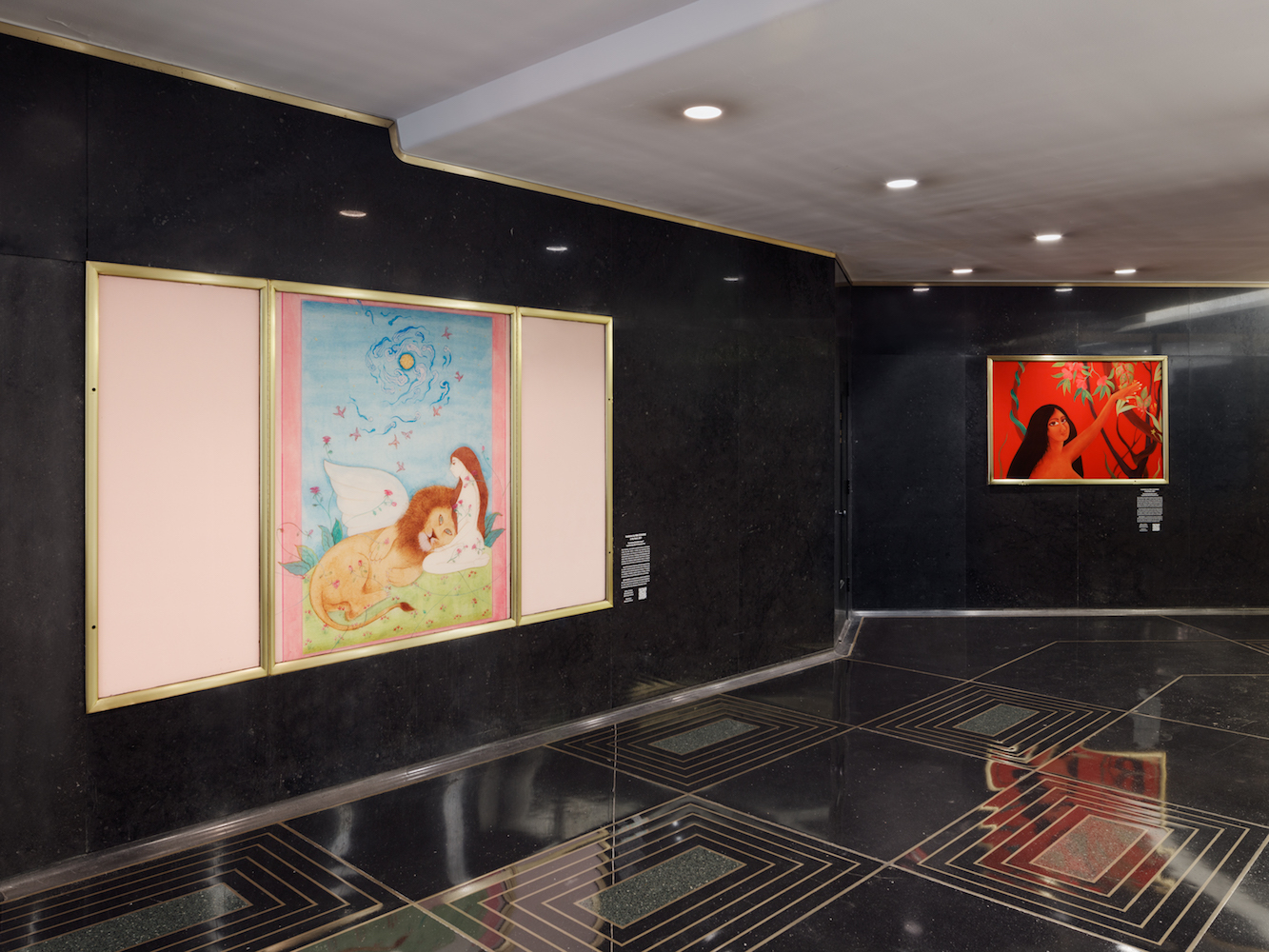 Install images of “In My Heart” by Hiba Schahbaz by Olympia Shannon, courtesy of Art Production Fund.
Install images of “In My Heart” by Hiba Schahbaz by Olympia Shannon, courtesy of Art Production Fund.
WW: Your story and stories of other women are important to your work. Why?
HS: On a normal day, I need lots of women in my life. I’m in constant communication with so many, aside from my family and friends. It amazes me how women are connected to each other. We tend to have the same stories, but in a different form. Over time, the female presence in my life became so strong that, while painting, I often considered my life and my narrative. Now when I paint, I think more of the collective. It’s always present. It’s natural for it to seep into my work.
As women, I feel like we’ve all gotten a fair amount of grief for who we are or what we do, what we look like or what we wear, what we say or what we write, what we paint or what we cook. Opinions are endless. I come from a place that is a bit more traditional, and part of the journey of accepting myself and painting what I want to paint has been intertwined. It has all moved together.
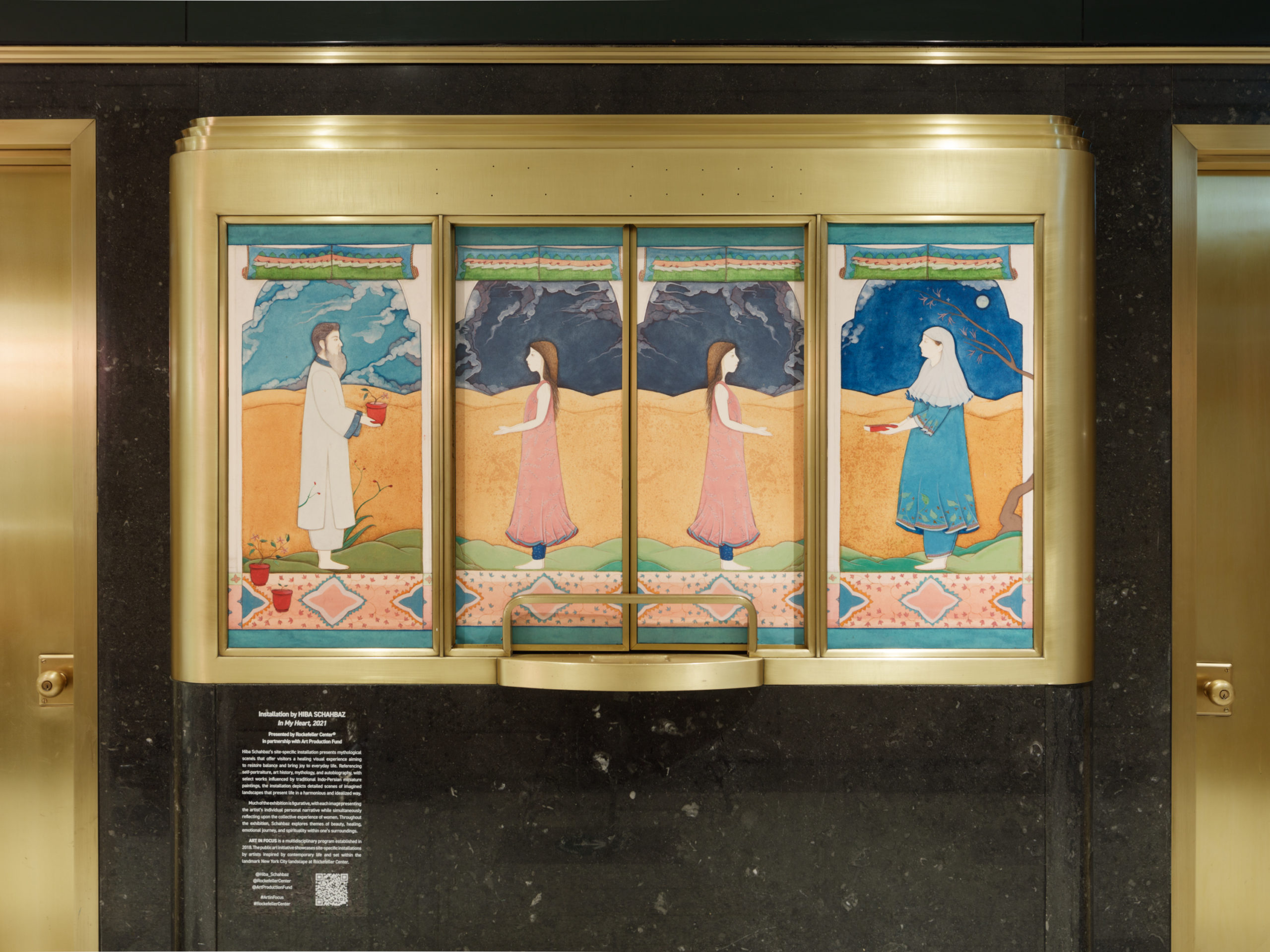 Install images of “In My Heart” by Hiba Schahbaz by Olympia Shannon, courtesy of Art Production Fund.
Install images of “In My Heart” by Hiba Schahbaz by Olympia Shannon, courtesy of Art Production Fund.
Coming from an Eastern society, the feminine part of being a woman is very openly accepted. Coming to a Western society, I always felt like I was getting a lot of criticism. It was strange to people that I wore dresses every day and that my personality is a few tones gentler. I didn’t understand why it was okay for other people to tell me what balance of masculine and feminine I should be, or what I should sound like. I was told once by an art dealer who was doing a studio visit that wearing dresses was totally uncool. When he left, he said, “You’re not going to start crying now, are you?”
I think femininity can be defined in so many ways other than what you’re wearing. It’s your essence as a person, and we should all have the space to express it. So I grounded into it even more, and femininity became even more important. I felt like I needed to claim that space. No one else has the right to take that from me.






